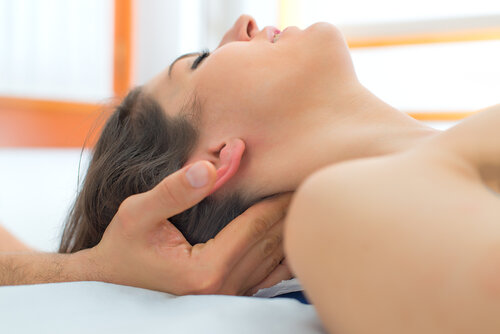
The Role of CranioSacral Therapy in Rehabilitation After Injury Or Surgery
Posted by Layla Dillon on 2023-03-09
When an injury or surgery occurs, there are several types of treatment that can be used to help the recovery process. One of the options is craniosacral therapy. This type of treatment can be useful for people who have headaches, neck pain, or traumatic brain injuries.
Treatment for traumatic brain injury
CranioSacral Therapy (CST) is a gentle, hands-on treatment designed to help the body heal itself. It involves a combination of physical techniques and counseling skills. The therapy helps to reduce inflammation and improve the function of the central nervous system.
In addition to alleviating headaches, craniosacral therapy has also been shown to be effective at treating other symptoms of concussion. This includes short-term memory loss, difficulty sleeping, and vestibular dysfunction.
The craniosacral system is comprised of membranes and bones that protect the brain and spinal cord. Cranial osteopathy is a type of massage therapy that targets the cranial bones and promotes better spinal fluid flow.
CranioSacral therapy is a natural form of healing and can be used to treat a variety of conditions. Some practitioners combine the techniques with counseling skills to focus on specific emotional or physical concerns.
There is some evidence that the endocannabinoid system plays a role in the effects of cranial therapy on patients with traumatic brain injuries. However, there is insufficient evidence to prove this.
In the case of concussion, cranial osteopathy can help to improve the flow of cerebrospinal fluid and increase the amount of oxygen reaching the brain. These changes can reduce headaches, improve sleep, and allow for faster recovery.
Another form of craniosacral therapy, Neural Manipulation, uses light touch to release local nerve restrictions. This technique is designed to change the global dysfunctional patterns in the body.
Treatment for neck pain
If you're looking for treatment for neck pain after injury or surgery, you might want to consider craniosacral therapy. This non-invasive approach is designed to relieve compression in bones, soft tissue, and membranes and allow for better flow of cerebrospinal fluid. It may also help you deal with stress, trauma, and head injuries.
Craniosacral therapy works by applying gentle pressure on the cranium and sacrum. The goal is to normalize the flow of cerebrospinal fluid, which controls muscles and nerves. It is not a replacement for prescription medications, but it can be beneficial.
Cerebrospinal fluid is a vital substance that controls all cells and functions in the body. In addition to providing energy, it lubricates and maintains muscle tone. When there are problems with this fluid, it can cause weakness and numbness in the arms and legs.
The study involved 54 chronic neck pain patients who were randomly assigned to either a light-touch sham treatment or a CST treatment. After three months of treatment, patients were evaluated for global improvement, functional disability, pain acceptability, and quality of life.
A primary outcome measure was pain intensity on a visual analog scale at week eight. Compared with the sham group, the CST group experienced statistically significant reduction in Cervicogenic pain.
Secondary outcomes measured patients' physical and mental well-being, pain acceptance, and body awareness. Compared with the sham group, patients in the CST group experienced a greater reduction in fatigue and pressure pain sensitivity, as well as improved sleep.
Treatment for headaches
Craniosacral therapy is a non-invasive form of touch therapy that releases tension deep in the body. It is often used by chiropractors, osteopathic physicians, and massage therapists. Among other uses, it is said to be effective in treating migraine and headaches.
Headaches are a common problem for many people. The pain can be mild or severe, and the condition can affect social, biological, and psychological functioning. Medications are commonly prescribed to treat them. However, these medications can have side effects.
For those with headaches, treatment options such as craniosacral therapy may help. According to one study, patients experienced a decrease in pain after just four weeks of craniosacral therapy. Several treatments are recommended to make a real difference.
Headaches are categorized into two main types: migraine and tension-type headaches. A tension-type headache is characterized by the presence of pressure in the head and neck. Unlike migraines, tension-type headaches do not tend to become aggravated by physical activity.
Craniosacral therapy is used for migraine and tension-type headaches. In addition to its use for these conditions, it has also been shown to be effective for chronic pain.
Craniosacral therapists use gentle palpation of the spine and other soft tissue in the patient's body to release restrictions in the cerebrospinal fluid or CSF. Patients can experience feelings of warmth, relaxation, and relief.